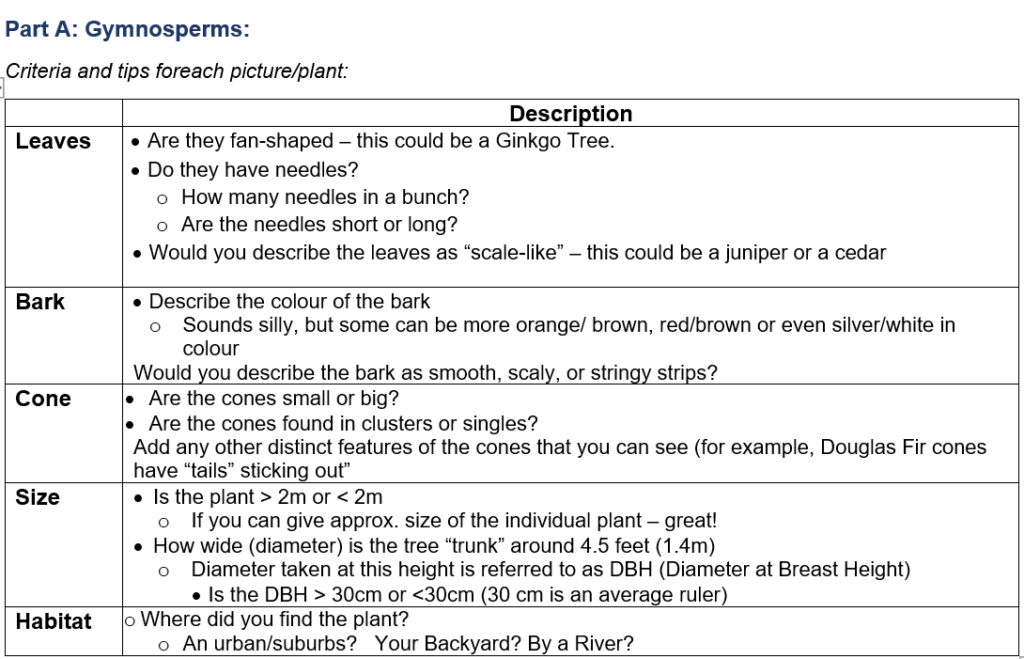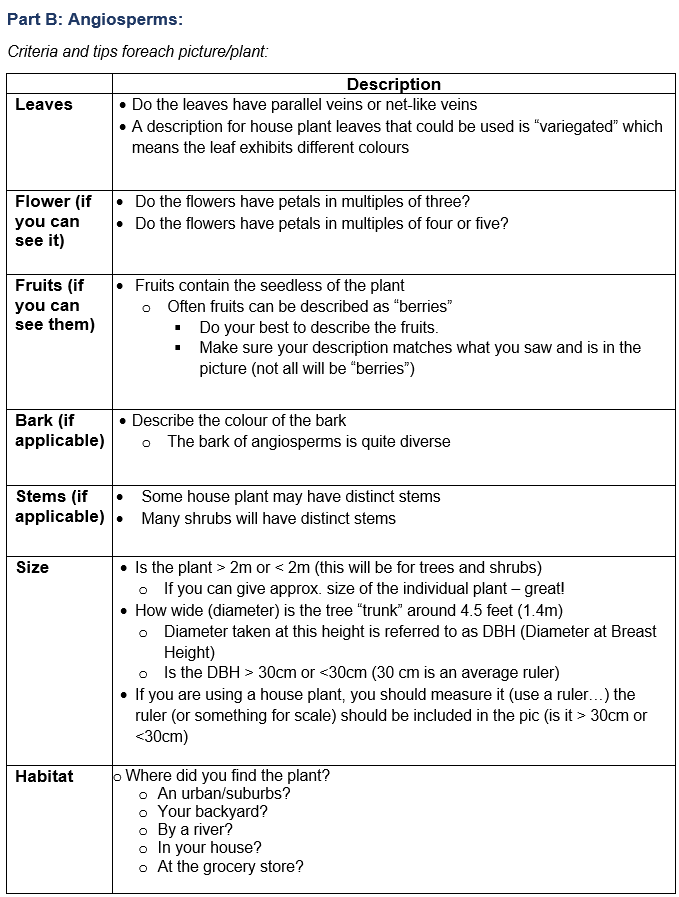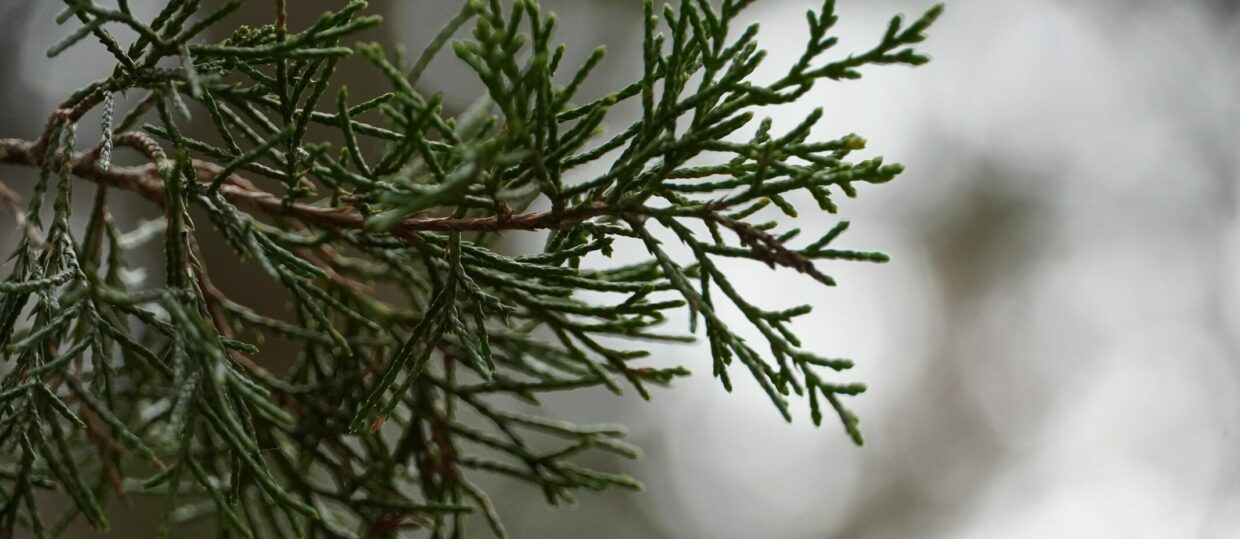Tory’s project introduced students to making field notes and drawings (or taking pictures with their phone) on plants to be able to identify them later. The project aimed to help students connect with their surroundings and recognize that plants are everywhere and play an integral part in our lives.

Students were asked to find three examples of Gynmosperms and three examples of Angiosperms. For each example, students:
- Record notes of features that may be key for identification
- Take a picture of the plant (must be taken by the student – need to include something in the photo to show that it was taken by them)
- Describe the surroundings/ecosystem
- Explain how they know the plant is an angiosperm or gymnosperm
- Determine the common and latin name for the plant and research one or two interesting facts about that plant
- Explain why they chose that plant
Students take a moment and think about the place they are, and how that place makes them feel, or things that they think about in that place (why did they choose that place and plant).
Tory Anchikoski


project format:
This project was delivered online during the Winter 2021 semester. Tory created an assignment drop box on the course Moodle page for students’ assignment submissions. If Tory was going to do this assignment in a similar manner, she would still have the students submit their full assignment to her, however in addition she would have liked to have a talking circle where each student would be given an opportunity to choose their favourite plant from the assignment, share the pictures and explain why they chose it. Tory has adapted this assignment a bit for the face-to-face lab. Students are now only to include four examples in total. The plants that they used this semester could be from their yard or on campus. In addition, there were two scavenger hunt plants for bonus marks (see instructions below).
BONUS: Plant Scavenger Hunt
- There are a few larch trees on campus. Find one, take a picture and attach the picture in your lab report under the bonus section. To Tory, Larches are magical, which makes sense that one is located near a spot on campus nicknamed after a magical place (from a children’s book).
- There are a lot of gingko trees on campus. Gingkoes are diecious (“two houses”) plants which means they have the male and female reproductive structures on different plants. Find a gingko tree, take a picture, and explain which tree is more common on campus (the male or female) and how do you know?
- Be sure to include something in your pictures so the instructor knows that it was taken by you and not from the internet.
Challenges:
Tory found it challenging to get students to recognize the importance of being able to take detailed observations/field notes and to get them to stop, think and recognize what they are doing and the place they are in. Most of the students seemed to rush through the assignment and complete the bare minimum for each section.
